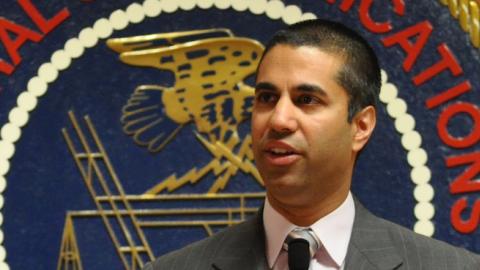Chairman Ajit Pai of the Federal Communications Commission was recently attacked by the New York Times as having an “Anti-Consumer Agenda.” Among other reasons, he is accused of questioning the value to consumers and the American economy of the prior FCC’s regulation of the Internet, the so-called “network neutrality” or “Open Internet” rules. Yet reviewing the network neutrality rules is a pro-consumer endeavor.
The American consumer loves the Internet and has prospered with the Internet over the past 25 years, almost all without benefit of much federal regulation, much less network neutrality rules. The Internet paradise may have been good for the American consumer, but not necessarily good for those who make federal regulations, such as those at the FCC. According to the FCC, the Internet needed something new—federal regulation. Give a pleasant-sounding name—Network Neutrality or Open Internet—and no one would resist.
But resistance happened. The FCC tried to entice courts to accept its Internet regulations twice through “Open Internet” rules and failed. The courts simply found no direct statutory authority for the FCC to regulate the Internet.
Then came the idea of defining the Internet not as new technology but as a 19th century technology like a telephone service. That is the same overregulated telephone service that American consumers are abandoning in droves. Telephone regulation is called common carriage, with roots in a Roman legal concept developed when electricity was unknown and when medical technology was embodied in leeches.
The idea of using common carriage as the legal foundation for regulating the Internet did not come from then-FCC chairman Tom Wheeler, who initially opposed the concept, but from President Obama, who released a YouTube video instructing the FCC to use Title II common carriage law. The video was ironically released in November, 2014, while President Obama was visiting China, one of the most repressive countries in the world with respect to the Internet. The FCC is supposed to be an independent agency, but the former FCC chairman followed the President’s command. Politics triumphed over independence.
The rules promulgated in the order are technologically illiterate. The rules focus on regulating “broadband Internet access service,” a service “that provides the capability to transmit data to and receive data from all or substantially all Internet endpoints.” Internet endpoints know no national boundaries. In a world filled with countries such as China that block much Internet traffic, particularly international traffic, no service provides “the capability to transmit data to and receive data from all or substantially all Internet endpoints.” Chairman Pai could simply issue a statement of the obvious: No one can provide broadband Internet access service because many countries block Internet access points.
Even if the FCC network neutrality order made technological sense, it was not written to benefit the American consumer. Each of its provisions deny the American consumer the option of purchasing services with certain characteristics. For example, American parents might reasonably seek to obtain an Internet service that blocks certain undesirable content specified by the consumer. The network neutrality order prohibits all such service choices to American consumers.
When the federal government blocks consumers from purchasing services, they are generally the big losers. Writing separate dissenting opinions in 2015, both then-Commissioner Pai and Commissioner O’Rielly explained the many ways consumers are harmed by the network neutrality order.
Consumers are also indirectly harmed when businesses reduce investment and innovation. A competitive business suddenly confronted with the prospect of common carrier regulation would be expected to reduce investment and innovation. Not surprisingly, some evidence suggests that it is exactly what has happened.
Rather than quantify the potential benefits and costs of the network neutrality order, the FCC merely asserted unspecified qualitative benefits. The order provides no future benchmarks to determine whether those unspecified qualitative benefits will ever be met or whether network neutrality is working as intended.
Apologists for network neutrality point to the D.C. Circuit Court decision upholding the FCC order. That decision does not determine whether the FCC order benefited consumers or not: “Critically, we do not ‘inquire as to whether the agency’s decision is wise as a policy matter; indeed, we are forbidden from substituting our judgment for that of the agency.’” Instead, consistent with the Chevron deference doctrine, which is referenced 15 times in the opinion, the court merely sought to determine whether the FCC acted “ ‘within the limits of [Congress’s] delegation’ of authority.”
It is difficult to see how the same court that granted Chevron deference to the FCC in writing the network neutrality rules would not grant the same Chevron deference to the FCC in repealing the same rules. A new FCC could simply say the rules are no longer in the public interest, a judgment a court would be hard pressed to dispute given the court did not look too carefully at the merits of the decision before.
American consumers know the Internet. They like the Internet. They spend substantial time and money on the Internet. The previous FCC, in the guise of looking after the consumer, passed rules to regulate and limit consumer activity on the Internet, even though there was no evidence of problems needing regulation. FCC Chairman Pai simply wants to reexamine that decision. What could be more pro-consumer than having the FCC review past regulations?

















